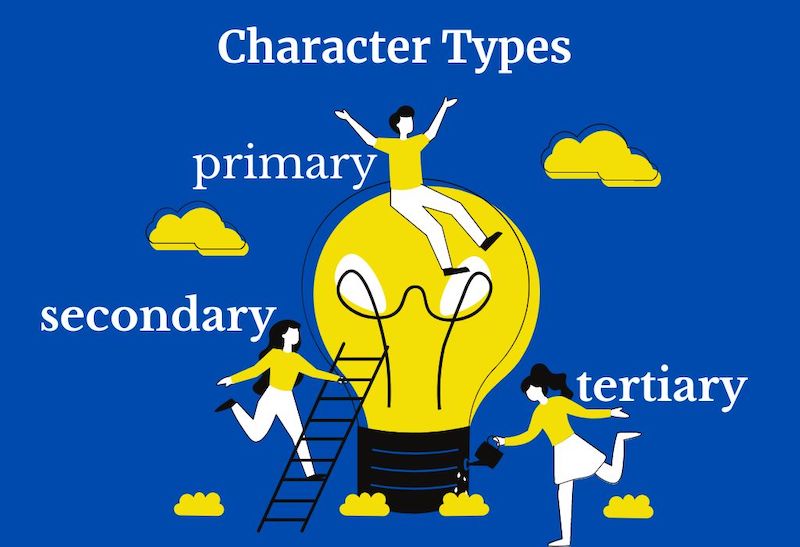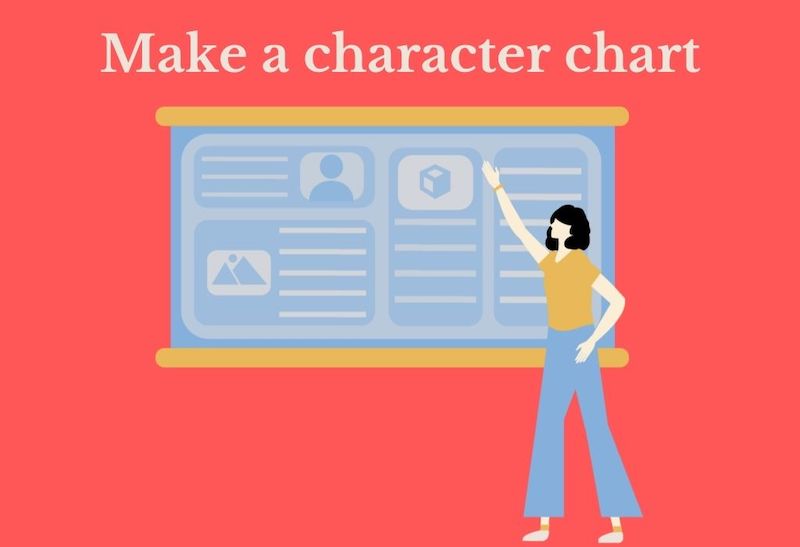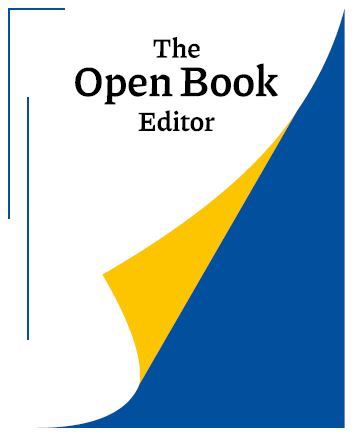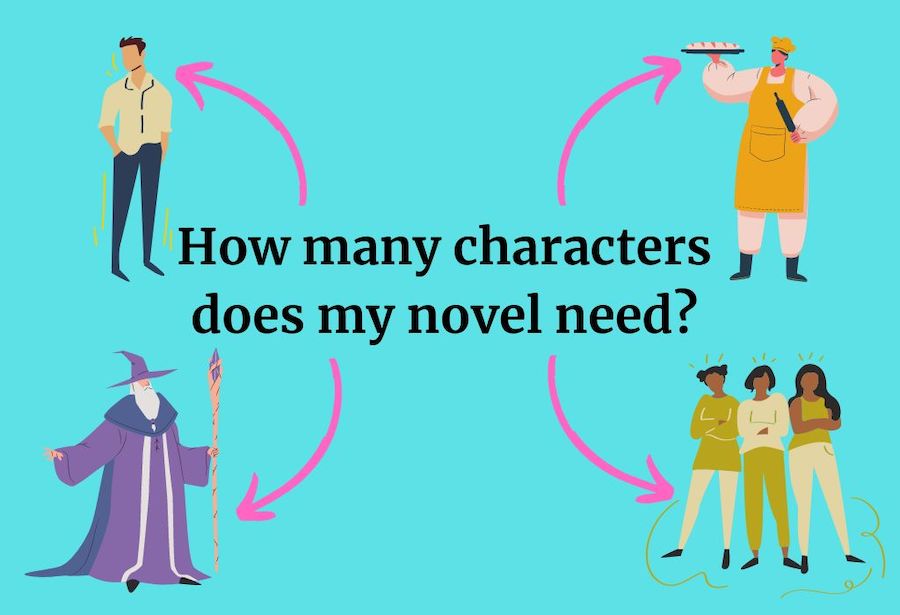Alongside an engaging plot and immersive world, having great characters is one of the most crucial elements of writing a book. But it’s easy to get excited during the writing process and want to incorporate every character marinating in your brain. We understand! Knowing when to stop adding (or when to add more) characters can be tricky.
You want to hit the right balance so your readers can become immersed in your story. This will help them engage with the characters in your novel. But how do you know when less is more, or too many is just…too much? Read on to learn about the different types of characters in a novel, and how to know when to kill (or save) your darlings.
What types of characters are there?
Compelling characters are vital for telling a great story. In order to understand how many characters you need in your novel, you should first know the different types and what purposes they serve. In general, characters in fiction can be categorised into one of three main types:

Primary: The primary characters in your novel are the major players of the story. They will have the biggest character arcs and appear regularly throughout. If the plot isn’t centred around a character, then they probably aren’t a primary character in your novel. Primary characters don’t just include the protagonist (or hero). Antagonists, love interests, mentors, and so on can also serve as primary characters. For example, in The Great Gatsby you could say that there are four main characters: Jay Gatsby (the protagonist), Nick Carraway (the narrator), Daisy Buchanan (the love interest), and Tom Buchanan (the antagonist).
Secondary: Secondary characters provide important supporting roles but don’t appear as much as the main characters. Their purpose is to help move the primary characters’ stories forward without commanding as big a focus within the story. In The Great Gatsby, Jordan Baker (Nick’s lukewarm love interest) and the Wilsons (Myrtle’s death and her husband’s reaction are the catalyst of the story) are examples of secondary characters.
Tertiary: These are minor characters who populate the background and appear in just a few scenes. They may not be strongly linked to the main plot. However they are meant to serve a purpose that helps add to the overall story. Meyer Wolfsheim is a tertiary character in The Great Gatsby. He shows up in one scene and his sole purpose is to hint at the shady way in which Gatsby earned his wealth.
Why too many characters in a novel can be a problem
You may be wondering why having a lot of characters in your novel is a problem. After all, writers like George R.R. Martin have done it with great results, right? However, this doesn’t mean that more is always better (though sometimes, it works great). Here are a few reasons why having too many characters in your novel can be a problem:

- Your readers will struggle to keep them straight. You don’t want your readers to forget characters or the roles they play. Constantly having to recall who someone is can lead to confusion about the plot and pull readers out of your story.
- Your reader struggles to connect with your characters. A larger cast of characters means your reader spends less time with each one. They might struggle to form a connection with your characters and, therefore, any emotional moments won’t carry the same weight.
- Your characters won’t feel real to your readers. Crafting believable characters is important for telling a rich story. However, if you overload your book with characters, some of them may feel less fleshed out than others. This can lead to your characters feeling more like plot devices. Remember, they shouldn’t just serve a particular function to the story, but also feel like real people.
Signs you have too many characters in your novel
So, how do you know if you have too many characters in your novel? Here are some questions to ask yourself:
- Do you have more than five primary characters? If you do, this could be too many. Since these characters have the biggest plot arcs, more than five means a lot of complex developments happening at once.
- Do you or your readers think your characters feel a bit wooden? Are the emotional scenes not landing as hard as they could? It might be you aren’t spending enough time developing your characters because there are too many others taking up time on the page.
- Can you combine two characters without losing necessary momentum or information? If you can combine two or more characters and achieve the same plot results while deepening the significance of a character, then readers may appreciate this.
- Do you have too many POVs? Too many competing POVs can diminish the strength of the story. A lot of writing professionals go by the rule of no more than three to five POVs per book. Any more can be confusing to follow.
(It’s worth mentioning that there are always exceptions to these rules! As mentioned above, one of the most famous examples is George R.R. Martin’s A Song of Ice and Fire series, which features over 2,000 named characters. This often results in first-time readers struggling to remember who is who. Despite this, Martin’s fantasy series is still one of the most popular of all time, proving there are exceptions to any rule.)
How to know when to get rid of a character
We authors have a tendency of getting attached to our creations, and cutting out even the most minor character can sometimes be a tough choice to make. But as the expression goes, sometimes we need to kill our darlings. Here are a few ways to know when to get rid of a character (even if it hurts!).

- Every character should play a role in the protagonist’s story. Even if it’s something as simple as an unnamed heckler, if they somehow advance your main character’s story or reveal something key about their motivations, desires, or needs to the reader, then they are useful. That’s not to say there isn’t a place for minor characters who only serve as a world-building device in the background, but don’t overdo them. Your readers will thank you if there are fewer minor characters to remember.
- Be mindful about the purpose of each character in your novel. If a character is serving a role that a secondary or primary character can do just as well, then perhaps you can get rid of them.
- Make a chart for all the characters in your novel and list each one’s goals, what role they perform in the story, and how frequently they appear. If you have a character that doesn’t perform a specific role (or performs a similar role to another character) or only appears once or twice, then maybe you can get rid of them.
So, how many characters should I include?
Plainly speaking, you should use as few characters as is necessary. This doesn’t mean as few as possible, but rather, the minimum amount needed to tell your story while making the world feel believable. Outlining each scene and creating character charts are great ways to help streamline which characters you need (or don’t) in your novel.
But don’t worry if you’re struggling to know if you need to lose any characters (and if so, which ones). It takes practice to get it right, and it’s common throughout the editing process for characters to disappear and reappear multiple times until you get the balance right.
We can offer you an objective opinion if you need it. Maybe you’ve fallen in love with your characters and can’t tell if they’re all necessary. Or perhaps you feel like something is missing from your story but you’re not quite sure what that is. We can work with you to identify which of your characters are performing their role superbly, which can be developed further, and which are surplus to requirements. Remember, it takes a village to write a great book and getting help from a professional editor will only make your novel better and help you improve your skills as a writer!


